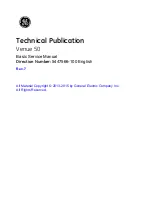
9
8
English
English
Front Panel
1. Input
Plug your guitar in here. Always use a good quality screened guitar lead.
Clean Channel
2. Clean Volume
This controls the volume of the Clean Channel. Turning it clockwise increases
the volume. At extreme clockwise settings the preamplifer will start to overdrive,
particularly in the ‘British’ mode.
3. Clean Voice Switch
This switch selects between the two clean voices. With the switch out, the ‘American’
setting is very clean and bright but with a solid and tight low end. When this Voice is
selected, the Voice LED is unlit. With the switch in, the ‘British’ setting has a looser
bass response with warmer mid-range and is very sensitive to the output level of the
guitar and the player’s dynamics. When this Voice is selected, the green Voice LED is
lit. The EQ voicing and valve gain structure is completely reconfigured between each
voice.
4. Tone
This is a dual control that effectively adjusts the treble and bass for the Clean
Channel at the same time. Fully counter clockwise (CCW) will be darker and bassy
in character. Rotating the control clockwise (CW) will progressively brighten the
sound and thin the bass.
OD (Overdrive) Channel
5. OD Select Switch
Press this switch to select the OD Channel. When the yellow LED is on, the OD
Channel is selected. When the yellow LED is off, the Clean Channel is selected.
6. OD Gain
The OD Gain control adjusts the amount of this Channel’s overdrive or distortion.
Low settings (anti-clockwise) will deliver a clean sound on the edge of break-up.
As the Gain control is increased clockwise the sound will become more overdriven,
moving through crunch tones until, at its maximum position, a full distorted tone is
reached.
7. OD Voice Switch
This is a momentary switch that selects between the two voices of the OD Channel.
When the small red LED is unlit, this channel has a ‘classic’ but ‘hot-rodded’ overdrive,
with medium power amp damping. With the red LED lit the overdrive sound has a
more ‘modern’ voicing that includes a strong mid-emphasised pre-overdrive boost,
as well as a looser, more aggressive sound due to reduced power amp damping.
8. OD Volume
This control adjusts the overall volume of the OD Channel. Turning it clockwise
increases the volume.
9. Bass
The Bass control adjusts the amount of low-end frequencies in your tone. This amp
has an advanced tone shaping circuit which allows the tone to be varied from tight
and cutting when counter clockwise, to warm and thumping when fully clockwise.
10. Middle
The Middle control adjusts the amount of middle frequencies in your tone. The middle
frequencies are particularly important in setting the amount of ‘body’ your tone has.
With the Middle control set to its minimum position (fully counter clockwise) the sound
will be aggressive and scooped, a tone ideal for aggressive rhythm playing. As the
Middle control is increased (clockwise) the amount of ‘body’ is increased, which is
more suitable for sustained lead guitar tones.
11. Treble
The Treble control allows exact adjustment of the treble frequencies within the
sound. At low settings (counter clockwise) the sound will be warm and darker in
character. As the Treble control is increased (clockwise) the sound will become
brighter. At the maximum settings the sound will be aggressive and cutting.
12. ISF (Infinite Shape Feature)
The patented ISF control works in conjunction with
the Bass, Middle and Treble controls. It allows you to
choose the exact tonal signature you prefer. Fully counter
clockwise has a more American characteristic with a
tight bottom-end and more aggressive middle, and fully
clockwise has a British characteristic which is more
‘woody’ and less aggressive.
Unlike conventional ‘contour’ controls and parametric equalisation systems, the Bass,
Middle and Treble controls remain interactive with each other just like in a traditional
guitar amplifier tone stack. This leads to a very familiar, musical response.
Summary of Contents for JJN-20R MkII
Page 9: ...17 16 Japanese Japanese ...

































